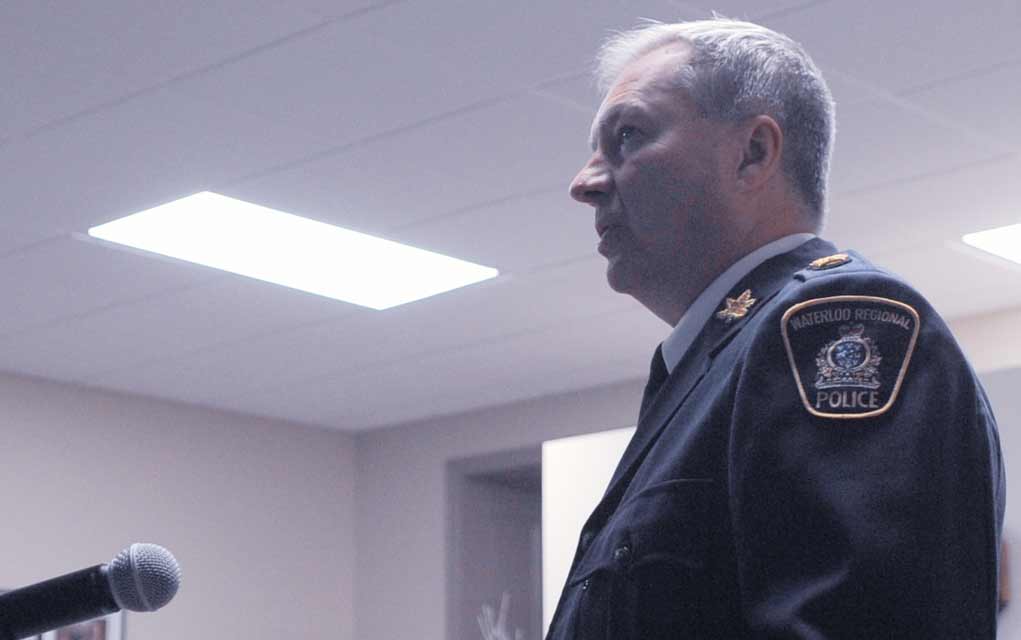A proposed expansion of the provincial Greenbelt, an area of land protected from urban development, casts an eye on Waterloo Region’s four rural townships.
Maps included in the early stages of public consultation take in parts of Woolwich and Wellesley townships, along with larger areas of Wilmot and North Dumfries.
Established in 2005, the Greenbelt currently spans some two million acres of land, mostly surrounding the Golden Horseshoe area around Lake Ontario. The belt designates large swathes of the area as farmland or other natural features to help preserve the land from development.
Extending the belt into Waterloo Region would place these lands under the policies of the Greenbelt Plan, potentially restricting future development.
Regional Chair Ken Seiling, while approving of the concept behind the Greenbelt, said he was concerned that the plan could potentially weaken the region’s current land-use policies.
“My view has always been the same at regional council. We have a very strong land-use planning regime here in the Region of Waterloo … and our position has always been, ‘we want the strongest of the two positions,’” he said.
“If the Greenbelt strengthens where we’re at, that’s fine. But if it weakens any of the provisions we have currently in our plans, we don’t want that to happen. So we’ll wait and see what the province is proposing, but certainly we don’t want any weakening of what we have in our planning document.”
Seiling pointed to a weakening of the region’s own official plan, its overarching land-use and planning document, when the province refused to help defend the document from attacks by developers. Challenges at the Ontario Municipal Board following the 2009 release of the official plan led to six years of legal battles and a watered-down document.
“We had some problems a few years ago when our official plan was challenged by developers and the province at that time, for whatever reason, didn’t defend us,” he said. “So we’d lost some of what we had in our plan … in terms of lands to be preserved. We don’t want a repeat of that.”
A spokesperson for the Ministry of Municipal Affairs, Geoffroi Bouchard, said that municipalities within the Greenbelt would be required to conform with the rules of the Greenbelt Plan; however, he noted that the plan accommodated local policies to an extent.
“In general, the Greenbelt Plan states that where local policies are more restrictive than those in the plan, they may continue to apply,” said Bouchard in an emailed statement. “With certain exceptions related to agricultural uses and mineral aggregate resources.”
While the Greenbelt has received some support from farmers, Neil Currie, general manager of the Ontario Federation of Agriculture, said there were lingering issues with how the plan was executed.
“We had some concerns with the Greenbelt in terms of the boundaries itself and where the lines are drawn and why. Generally, the notion of protecting farmland is obviously favourable, as far as we’re concerned,” said Currie. A common sticking point, he said, was when the Greenbelt was extended to lands that were not necessarily viable farmland, restricting any other uses for the land.
Currie said that the OFA was still studying the maps presented by the province on the Greenbelt expansion, and could not yet comment on the proposal.
But for Kevin Thomason, co-founder of the Smart Growth Waterloo Region advocacy group, the expansion of the Greenbelt into the region was unequivocally great news. While he strongly supported the Region’s official plan as sound, he said joining the Greenbelt would prevent future politicians from tampering with the protections.
“We know in this era of rogue politicians, we need a second layer of support. Because all it takes is one – and we see this in many other jurisdictions, where one rogue politician is undoing years of effort,” he said. “So if we have strong provincial protection plus good local protection, then we truly have the best of both worlds.”
Thomason explained that because the land-use rules in Waterloo Region are already so robust, joining the Greenbelt would not change anything in their fields.
“Unless you’re planning on giving up your farm, it’s not changing the way you grow your corn, or your soybeans, or what sort of barn you can build, or where your manure pit needs to be, or anything like that,” he said.
Ultimately, while land-use laws are seldom considered by the public, they have an enormous impact on communities by directing future growth and development, said Thomason.
“These are the large, landscape-based decisions that only come along once in a generation. You know, we’re really defining the Greenbelt. We’re saying here, ‘what are the areas that are important to us? What do we value? What are we going to protect for the next generation or beyond? And what are we going to pave over and think nothing about?’”
The province has presented a map of the expansion, but they are asking feedback from people who actually live on the lands in question. Those interested in submitting comments online can find the comment form through the Ministry of Municipal Affairs website (www.mah.gov.on.ca, under Land use planning system). Further public consultations are also planned for 2018.









